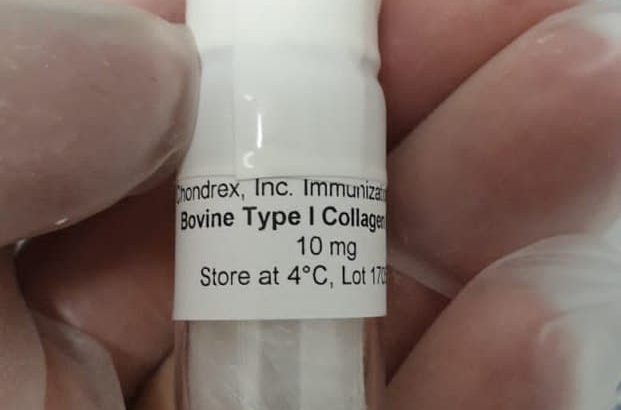Hydrodynamic theories successfully describe many-body programs out of equilibrium when it comes to just a few macroscopic parameters. However, such parameters are troublesome to find out from microscopic data. Seldom is that this problem extra obvious than in lively matter, the place the hydrodynamic parameters are actually fields that encode the distribution of energy-injecting microscopic parts. Here, we use lively nematics to reveal that neural networks can map out the spatiotemporal variation of a number of hydrodynamic parameters and forecast the chaotic dynamics of those programs.
We analyze biofilament/molecular-motor experiments with microtubule/kinesin and actin/myosin complexes as laptop imaginative and prescient issues. Our algorithms can decide how exercise and elastic moduli change as a operate of area and time, in addition to adenosine triphosphate (ATP) or motor focus. The solely enter wanted is the orientation of the biofilaments and never the coupled velocity subject which is tougher to entry in experiments. We may also forecast the evolution of those chaotic many-body programs solely from picture sequences of their previous utilizing a mixture of autoencoders and recurrent neural networks with residual structure. In life like experimental setups for which the preliminary circumstances will not be completely identified, our physics-inspired machine-learning algorithms can surpass deterministic simulations.
Blending of various biopolymers, e.g., collagen, chitosan, silk fibroin and cross-linking modifications of those mixtures can result in new supplies with improved physico-chemical properties, in comparison with single-component scaffolds. Three-dimensional scaffolds based mostly on three-component mixtures of silk fibroin, collagen and chitosan, chemically cross-linked, have been ready and their physico-chemical and organic properties have been evaluated. A mix of EDC (N-(3-dimethylaminopropyl)-N’-ethylcarbodiimide hydrochloride) and NHS (N-hydroxysuccinimide) was used as a cross-linking agent. FTIR was used to watch the place of the peaks attribute for collagen, chitosan and silk fibroin. The following properties relying on the scaffold construction have been studied: swelling conduct, liquid uptake, moisture content material, porosity, density, and mechanical parameters.
Scanning Electron Microscopy imaging was carried out. Additionally, the organic properties of those supplies have been assessed, by metabolic exercise assay. The outcomes confirmed that the three-component mixtures, cross-linked by EDC/NHS and ready by lyophilization methodology, offered porous constructions. They have been characterised by a excessive swelling diploma. The composition of scaffolds has an affect on mechanical properties. All of the studied supplies have been cytocompatible with MG-63 osteoblast-like cells. Our research paves the way in which for artificial-intelligence characterization and management of coupled chaotic fields in numerous bodily and organic programs, even within the absence of information of the underlying dynamics.
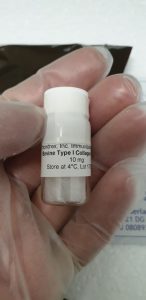
Evaluating Whole Blood Clotting in vitro on Biomaterial Surfaces
Biomaterial-associated thrombosis continues to be a significant concern for blood-contacting implants. After the medical system is implanted and is available in contact with blood, a number of advanced reactions happen, which can result in thrombus formation and failure of the system. Therefore, it’s important to guage the biomaterial interplay with the entire blood. Several research have been reported within the literature that consider completely different steps within the coagulation cascade, resembling protein adsorption, plasma activation, and platelet adhesion in vitro, nonetheless, analysis of complete blood clotting on biomaterial surfaces is just not extensively reported.
Here, a protocol to guage complete blood clotting in vitro on 2D biomaterials surfaces by way of a easy and quick hemolysis assay is offered. Whole human blood is positioned onto the biomaterial surfaces and is allowed to clot for various time durations. After the particular time intervals, the surfaces are transferred into deionized (DI) water to launch the free hemoglobin and the absorbance of this answer is measured. The absorbance worth is proportional to the free hemoglobin focus within the DI water as a consequence of lysis of crimson blood cells and offers an oblique correlation to the extent of blood clotting on the biomaterial surfaces. This protocol offers a quick, facile and efficient methodology to measure the anti-thrombogenic properties of biomaterials.
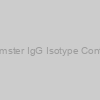 Hamster IgG Isotype Control |
|
GWB-1A8D7A |
GenWay Biotech |
0.1 mg |
Ask for price |
|
|
 Hamster IgG Isotype Control |
|
GWB-30C10C |
GenWay Biotech |
0.1 mg |
Ask for price |
|
|
 Hamster IgG Isotype Control |
|
GWB-3114BE |
GenWay Biotech |
0.5 mg |
Ask for price |
|
|
 Hamster IgG Isotype Control |
|
GWB-3413D0 |
GenWay Biotech |
0.1 mg |
Ask for price |
|
|
 Hamster IgG Isotype Control |
|
GWB-6571A8 |
GenWay Biotech |
0.5 mg |
Ask for price |
 Hamster IgG Isotype Control |
|
GWB-EE081F |
GenWay Biotech |
0.5 mg |
Ask for price |
 Hamster IgG Isotype Control |
|
GWB-C224BD |
GenWay Biotech |
0.1 mg |
Ask for price |
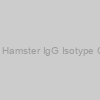 Syrian Hamster IgG Isotype Control |
|
SIGGA-100 |
ImmunoStep |
100 µg |
EUR 688.99 |
 Syrian Hamster IgG Isotype Control |
|
SIGGB-200 |
ImmunoStep |
200 µg |
EUR 566.69 |
 Syrian Hamster IgG Isotype Control |
|
SIGGF-200 |
ImmunoStep |
200 µg |
EUR 654.05 |
 Syrian Hamster IgG Isotype Control |
|
SIGGPE-100 |
ImmunoStep |
100 µg |
EUR 619.1 |
 Syrian Hamster IgG Isotype Control |
|
SIGGPP5.5-100 |
ImmunoStep |
100 µg |
EUR 811.3 |
 Syrian Hamster IgG Isotype Control |
|
SIGGPP5.5-25 |
ImmunoStep |
25 µg |
EUR 426.91 |
 Syrian Hamster IgG Isotype Control |
|
SIGGPU-500 |
ImmunoStep |
500 µg |
EUR 514.27 |
 Armenian Hamster IgG Isotype control |
|
AIGGA-100 |
ImmunoStep |
100 µg |
EUR 688.99 |
 Armenian Hamster IgG Isotype control |
|
AIGGA-25 |
ImmunoStep |
25 µg |
EUR 339.55 |
 Armenian Hamster IgG Isotype control |
|
AIGGB-200 |
ImmunoStep |
200 µg |
EUR 566.69 |
 Armenian Hamster IgG Isotype control |
|
AIGGB-50 |
ImmunoStep |
50 µg |
EUR 287.14 |
 Armenian Hamster IgG Isotype control |
|
AIGGF-200 |
ImmunoStep |
200 µg |
EUR 654.05 |
 Armenian Hamster IgG Isotype control |
|
AIGGF-50 |
ImmunoStep |
50 µg |
EUR 322.08 |
 Armenian Hamster IgG Isotype control |
|
AIGGPE-100 |
ImmunoStep |
100 µg |
EUR 619.1 |
 Armenian Hamster IgG Isotype control |
|
AIGGPE-25 |
ImmunoStep |
25 µg |
EUR 304.61 |
 Armenian Hamster IgG Isotype control |
|
AIGGPP-100 |
ImmunoStep |
100 µg |
EUR 688.99 |
 Armenian Hamster IgG Isotype control |
|
AIGGPP-25 |
ImmunoStep |
25 µg |
EUR 322.08 |
 Armenian Hamster IgG Isotype control |
|
AIGGPP5.5-100 |
ImmunoStep |
100 µg |
EUR 776.35 |
 Armenian Hamster IgG Isotype control |
|
AIGGPP5.5-25 |
ImmunoStep |
25 µg |
EUR 339.55 |
 Armenian Hamster IgG Isotype control |
|
AIGGPU-50 |
ImmunoStep |
50 µg |
EUR 234.72 |
 Armenian Hamster IgG Isotype control |
|
AIGGPU-500 |
ImmunoStep |
500 µg |
EUR 514.27 |
 IgG Isotype Control) Hamster (Syrian) IgG Isotype Control |
|
abx405032-025mg |
Abbexa |
0.25 mg |
EUR 460.8 |
|
|
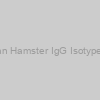 PE Syrian Hamster IgG Isotype Control |
|
DL22376F-20Tests |
DL Develop |
20Tests |
EUR 158 |
 PE Syrian Hamster IgG Isotype Control |
|
DL22376F-50Tests |
DL Develop |
50Tests |
EUR 233 |
 PE Syrian Hamster IgG Isotype Control |
|
DL22391F-25ug |
DL Develop |
25μg |
EUR 137 |
 PE Syrian Hamster IgG Isotype Control |
|
DL22391F-50ug |
DL Develop |
50μg |
EUR 182 |
 IgG Isotype Control) Hamster (Armenian) IgG Isotype Control |
|
abx405028-025mg |
Abbexa |
0.25 mg |
EUR 460.8 |
|
|
 IgG Isotype Control) Hamster (Arnenian) IgG Isotype Control |
|
abx405029-05mg |
Abbexa |
0.5 mg |
EUR 710.4 |
|
|
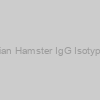 FITC Syrian Hamster IgG Isotype Control |
|
DL22375F-20Tests |
DL Develop |
20Tests |
EUR 158 |
 FITC Syrian Hamster IgG Isotype Control |
|
DL22375F-50Tests |
DL Develop |
50Tests |
EUR 233 |
 FITC Syrian Hamster IgG Isotype Control |
|
DL22390F-25ug |
DL Develop |
25μg |
EUR 137 |
 FITC Syrian Hamster IgG Isotype Control |
|
DL22390F-50ug |
DL Develop |
50μg |
EUR 182 |
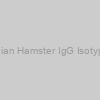 PE Armenian Hamster IgG Isotype Control |
|
DL22565F-20Tests |
DL Develop |
20Tests |
EUR 158 |
 PE Armenian Hamster IgG Isotype Control |
|
DL22565F-50Tests |
DL Develop |
50Tests |
EUR 233 |
 PE Armenian Hamster IgG Isotype Control |
|
DL22580F-25ug |
DL Develop |
25μg |
EUR 137 |
 PE Armenian Hamster IgG Isotype Control |
|
DL22580F-50ug |
DL Develop |
50μg |
EUR 182 |
 PE Armenian Hamster IgG Isotype Control |
|
E16FTCP006-025U |
EnoGene |
25 μg |
EUR 303.33 |
|
Description: Available in various conjugation types. |
 PE Armenian Hamster IgG Isotype Control |
|
E16FTCP006-100U |
EnoGene |
100 μg |
EUR 693.33 |
|
Description: Available in various conjugation types. |
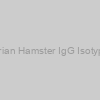 AF488 Syrian Hamster IgG Isotype Control |
|
DL22384F-20Tests |
DL Develop |
20Tests |
EUR 185 |
 AF488 Syrian Hamster IgG Isotype Control |
|
DL22384F-50Tests |
DL Develop |
50Tests |
EUR 267.5 |
 AF647 Syrian Hamster IgG Isotype Control |
|
DL22385F-20Tests |
DL Develop |
20Tests |
EUR 185 |
 AF647 Syrian Hamster IgG Isotype Control |
|
DL22385F-50Tests |
DL Develop |
50Tests |
EUR 267.5 |
 AF488 Syrian Hamster IgG Isotype Control |
|
DL22399F-25ug |
DL Develop |
25μg |
EUR 182 |
 AF488 Syrian Hamster IgG Isotype Control |
|
DL22399F-50ug |
DL Develop |
50μg |
EUR 272 |
 AF647 Syrian Hamster IgG Isotype Control |
|
DL22400F-25ug |
DL Develop |
25μg |
EUR 182 |
 AF647 Syrian Hamster IgG Isotype Control |
|
DL22400F-50ug |
DL Develop |
50μg |
EUR 272 |
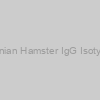 APC Armenian Hamster IgG Isotype Control |
|
DL22566F-20Tests |
DL Develop |
20Tests |
EUR 170 |
 APC Armenian Hamster IgG Isotype Control |
|
DL22566F-50Tests |
DL Develop |
50Tests |
EUR 245 |
 APC Armenian Hamster IgG Isotype Control |
|
DL22581F-25ug |
DL Develop |
25μg |
EUR 147.5 |
 APC Armenian Hamster IgG Isotype Control |
|
DL22581F-50ug |
DL Develop |
50μg |
EUR 197 |
 APC Armenian Hamster IgG Isotype Control |
|
E16FTCA006-025U |
EnoGene |
25 μg |
EUR 346.67 |
|
Description: Available in various conjugation types. |
 APC Armenian Hamster IgG Isotype Control |
|
E16FTCA006-100U |
EnoGene |
100 μg |
EUR 780 |
|
Description: Available in various conjugation types. |
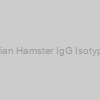 Biotin Syrian Hamster IgG Isotype Control |
|
DL22389F-25ug |
DL Develop |
25μg |
EUR 137 |
 Biotin Syrian Hamster IgG Isotype Control |
|
DL22389F-50ug |
DL Develop |
50μg |
EUR 182 |
 FITC Armenian Hamster IgG Isotype Control |
|
DL22564F-20Tests |
DL Develop |
20Tests |
EUR 158 |
 FITC Armenian Hamster IgG Isotype Control |
|
DL22564F-50Tests |
DL Develop |
50Tests |
EUR 233 |
 FITC Armenian Hamster IgG Isotype Control |
|
DL22579F-25ug |
DL Develop |
25μg |
EUR 137 |
 FITC Armenian Hamster IgG Isotype Control |
|
DL22579F-50ug |
DL Develop |
50μg |
EUR 182 |
 FITC Armenian Hamster IgG Isotype Control |
|
E16FTCF006-200U |
EnoGene |
200 μg |
EUR 736.67 |
|
Description: Available in various conjugation types. |
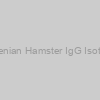 AF647 Armenian Hamster IgG Isotype Control |
|
DL22574F-20Tests |
DL Develop |
20Tests |
EUR 185 |
 AF647 Armenian Hamster IgG Isotype Control |
|
DL22574F-50Tests |
DL Develop |
50Tests |
EUR 267.5 |
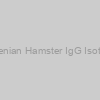 AF488 Armenian Hamster IgG Isotype Control |
|
DL22588F-25ug |
DL Develop |
25μg |
EUR 182 |
 AF488 Armenian Hamster IgG Isotype Control |
|
DL22588F-50ug |
DL Develop |
50μg |
EUR 272 |
 AF647 Armenian Hamster IgG Isotype Control |
|
DL22589F-25ug |
DL Develop |
25μg |
EUR 182 |
 AF647 Armenian Hamster IgG Isotype Control |
|
DL22589F-50ug |
DL Develop |
50μg |
EUR 272 |
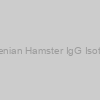 PerCP Armenian Hamster IgG Isotype Control |
|
E16FTCR006-025U |
EnoGene |
25 μg |
EUR 325 |
|
Description: Available in various conjugation types. |
 PerCP Armenian Hamster IgG Isotype Control |
|
E16FTCR006-100U |
EnoGene |
100 μg |
EUR 780 |
|
Description: Available in various conjugation types. |
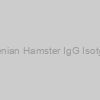 Biotin Armenian Hamster IgG Isotype Control |
|
DL22578F-25ug |
DL Develop |
25μg |
EUR 137 |
 Biotin Armenian Hamster IgG Isotype Control |
|
DL22578F-50ug |
DL Develop |
50μg |
EUR 182 |
 Biotin Armenian Hamster IgG Isotype Control |
|
E16FTCB006-200U |
EnoGene |
200 μg |
EUR 628.33 |
|
Description: Available in various conjugation types. |
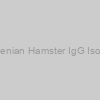 Purified Armenian Hamster IgG Isotype Control |
|
DL22577F-25ug |
DL Develop |
25μg |
EUR 137 |
 Purified Armenian Hamster IgG Isotype Control |
|
DL22577F-50ug |
DL Develop |
50μg |
EUR 182 |
 IgG Isotype Control (FITC)) Hamster (Syrian) IgG Isotype Control (FITC) |
|
abx405033-01mg |
Abbexa |
0.1 mg |
EUR 477.6 |
|
|
 IgG Isotype Control (RPE)) Hamster (Arnenian) IgG Isotype Control (RPE) |
|
abx405031-01mg |
Abbexa |
0.1 mg |
EUR 610.8 |
|
|
 [PIP]) Armenian Hamster IgG Isotype Control (PE) [PIP] |
|
E2781886 |
EnoGene |
100tests |
EUR 485 |
|
Description: Biotin-Conjugated, FITC-Conjugated , AF350 Conjugated , AF405M-Conjugated ,AF488-Conjugated, AF514-Conjugated ,AF532-Conjugated, AF555-Conjugated ,AF568-Conjugated , HRP-Conjugated, AF405S-Conjugated, AF405L-Conjugated , AF546-Conjugated, AF594-Conjugated , AF610-Conjugated, AF635-Conjugated , AF647-Conjugated , AF680-Conjugated , AF700-Conjugated , AF750-Conjugated , AF790-Conjugated , APC-Conjugated , PE-Conjugated , Cy3-Conjugated , Cy5-Conjugated , Cy5.5-Conjugated , Cy7-Conjugated Antibody |
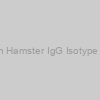 PE Armenian Hamster IgG Isotype Control[PIP] |
|
E-AB-F09852D-100Tests |
Elabscience Biotech |
100Tests |
EUR 82 |
|
|
|
Description: FCM |
 PE Armenian Hamster IgG Isotype Control[PIP] |
|
E-AB-F09852D-100Tests2 |
Elabscience Biotech |
100Tests×2 |
EUR 112 |
|
|
|
Description: FCM |
 PE Armenian Hamster IgG Isotype Control[PIP] |
|
E-AB-F09852D-20Tests |
Elabscience Biotech |
20Tests |
EUR 32 |
|
|
|
Description: FCM |
 PE Armenian Hamster IgG Isotype Control[PIP] |
|
E-AB-F09853D-100ug |
Elabscience Biotech |
100ug |
EUR 50 |
|
|
|
Description: FCM |
 PE Armenian Hamster IgG Isotype Control[PIP] |
|
E-AB-F09853D-25ug |
Elabscience Biotech |
25ug |
EUR 21 |
|
|
|
Description: FCM |
 PE Armenian Hamster IgG Isotype Control[PIP] |
|
E-AB-F09853D-each |
Elabscience Biotech |
each |
Ask for price |
|
|
|
Description: FCM |
 IgG Isotype Control (FITC)) Hamster (Arnenian) IgG Isotype Control (FITC) |
|
abx405030-01mg |
Abbexa |
0.1 mg |
EUR 460.8 |
|
|
 [PIP]) Armenian Hamster IgG Isotype Control (APC) [PIP] |
|
E2781887 |
EnoGene |
100tests |
EUR 485 |
|
Description: Biotin-Conjugated, FITC-Conjugated , AF350 Conjugated , AF405M-Conjugated ,AF488-Conjugated, AF514-Conjugated ,AF532-Conjugated, AF555-Conjugated ,AF568-Conjugated , HRP-Conjugated, AF405S-Conjugated, AF405L-Conjugated , AF546-Conjugated, AF594-Conjugated , AF610-Conjugated, AF635-Conjugated , AF647-Conjugated , AF680-Conjugated , AF700-Conjugated , AF750-Conjugated , AF790-Conjugated , APC-Conjugated , PE-Conjugated , Cy3-Conjugated , Cy5-Conjugated , Cy5.5-Conjugated , Cy7-Conjugated Antibody |
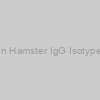 APC Armenian Hamster IgG Isotype Control[PIP] |
|
E-AB-F09852E-100Tests |
Elabscience Biotech |
100Tests |
EUR 110 |
|
|
|
Description: FCM |
 APC Armenian Hamster IgG Isotype Control[PIP] |
|
E-AB-F09852E-100Tests2 |
Elabscience Biotech |
100Tests×2 |
EUR 160 |
|
|
|
Description: FCM |
 APC Armenian Hamster IgG Isotype Control[PIP] |
|
E-AB-F09852E-20Tests |
Elabscience Biotech |
20Tests |
EUR 40 |
|
|
|
Description: FCM |
 APC Armenian Hamster IgG Isotype Control[PIP] |
|
E-AB-F09853E-100ug |
Elabscience Biotech |
100ug |
EUR 69 |
|
|
|
Description: FCM |
 APC Armenian Hamster IgG Isotype Control[PIP] |
|
E-AB-F09853E-25ug |
Elabscience Biotech |
25ug |
EUR 30 |
|
|
|
Description: FCM |
 APC Armenian Hamster IgG Isotype Control[PIP] |
|
E-AB-F09853E-each |
Elabscience Biotech |
each |
Ask for price |
|
|
|
Description: FCM |
) Hamster IgG, purified (Syrian, isotype control) |
|
20003-1 |
Alpha Diagnostics |
1 mg |
EUR 169.2 |
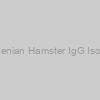 PE-Cy5 Armenian Hamster IgG Isotype Control |
|
E16FTCC006-025U |
EnoGene |
25 μg |
EUR 346.67 |
|
Description: Available in various conjugation types. |
 PE-Cy5 Armenian Hamster IgG Isotype Control |
|
E16FTCC006-100U |
EnoGene |
100 μg |
EUR 780 |
|
Description: Available in various conjugation types. |
 PE-Cy7 Armenian Hamster IgG Isotype Control |
|
E16FTCN006-025U |
EnoGene |
25 μg |
EUR 346.67 |
|
Description: Available in various conjugation types. |
 PE-Cy7 Armenian Hamster IgG Isotype Control |
|
E16FTCN006-100U |
EnoGene |
100 μg |
EUR 650 |
|
Description: Available in various conjugation types. |
 [PIP]) Armenian Hamster IgG Isotype Control (FITC) [PIP] |
|
E2781892 |
EnoGene |
100tests |
EUR 485 |
|
Description: Biotin-Conjugated, FITC-Conjugated , AF350 Conjugated , AF405M-Conjugated ,AF488-Conjugated, AF514-Conjugated ,AF532-Conjugated, AF555-Conjugated ,AF568-Conjugated , HRP-Conjugated, AF405S-Conjugated, AF405L-Conjugated , AF546-Conjugated, AF594-Conjugated , AF610-Conjugated, AF635-Conjugated , AF647-Conjugated , AF680-Conjugated , AF700-Conjugated , AF750-Conjugated , AF790-Conjugated , APC-Conjugated , PE-Conjugated , Cy3-Conjugated , Cy5-Conjugated , Cy5.5-Conjugated , Cy7-Conjugated Antibody |
 FITC Armenian Hamster IgG Isotype Control[PIP] |
|
E-AB-F09852C-100Tests |
Elabscience Biotech |
100Tests |
EUR 82 |
|
|
|
Description: FCM |
 FITC Armenian Hamster IgG Isotype Control[PIP] |
|
E-AB-F09852C-100Tests2 |
Elabscience Biotech |
100Tests×2 |
EUR 112 |
|
|
|
Description: FCM |
 FITC Armenian Hamster IgG Isotype Control[PIP] |
|
E-AB-F09852C-20Tests |
Elabscience Biotech |
20Tests |
EUR 32 |
|
|
|
Description: FCM |
 FITC Armenian Hamster IgG Isotype Control[PIP] |
|
E-AB-F09853C-100ug |
Elabscience Biotech |
100ug |
EUR 50 |
|
|
|
Description: FCM |
 FITC Armenian Hamster IgG Isotype Control[PIP] |
|
E-AB-F09853C-25ug |
Elabscience Biotech |
25ug |
EUR 21 |
|
|
|
Description: FCM |
 FITC Armenian Hamster IgG Isotype Control[PIP] |
|
E-AB-F09853C-each |
Elabscience Biotech |
each |
Ask for price |
|
|
|
Description: FCM |
 APC-Cy7 Armenian Hamster IgG Isotype Control |
|
E16FTCO006-025U |
EnoGene |
25 μg |
EUR 390 |
|
Description: Available in various conjugation types. |
 [PIP]) Armenian Hamster IgG Isotype Control (AF647) [PIP] |
|
E2781891 |
EnoGene |
100tests |
EUR 485 |
|
Description: Biotin-Conjugated, FITC-Conjugated , AF350 Conjugated , AF405M-Conjugated ,AF488-Conjugated, AF514-Conjugated ,AF532-Conjugated, AF555-Conjugated ,AF568-Conjugated , HRP-Conjugated, AF405S-Conjugated, AF405L-Conjugated , AF546-Conjugated, AF594-Conjugated , AF610-Conjugated, AF635-Conjugated , AF647-Conjugated , AF680-Conjugated , AF700-Conjugated , AF750-Conjugated , AF790-Conjugated , APC-Conjugated , PE-Conjugated , Cy3-Conjugated , Cy5-Conjugated , Cy5.5-Conjugated , Cy7-Conjugated Antibody |
 [PIP]) Armenian Hamster IgG Isotype Control (EV450) [PIP] |
|
E2782069 |
EnoGene |
100tests |
EUR 485 |
|
Description: Biotin-Conjugated, FITC-Conjugated , AF350 Conjugated , AF405M-Conjugated ,AF488-Conjugated, AF514-Conjugated ,AF532-Conjugated, AF555-Conjugated ,AF568-Conjugated , HRP-Conjugated, AF405S-Conjugated, AF405L-Conjugated , AF546-Conjugated, AF594-Conjugated , AF610-Conjugated, AF635-Conjugated , AF647-Conjugated , AF680-Conjugated , AF700-Conjugated , AF750-Conjugated , AF790-Conjugated , APC-Conjugated , PE-Conjugated , Cy3-Conjugated , Cy5-Conjugated , Cy5.5-Conjugated , Cy7-Conjugated Antibody |
 [PIP]) Armenian Hamster IgG Isotype Control (ER780) [PIP] |
|
E2782089 |
EnoGene |
100tests |
EUR 485 |
|
Description: Biotin-Conjugated, FITC-Conjugated , AF350 Conjugated , AF405M-Conjugated ,AF488-Conjugated, AF514-Conjugated ,AF532-Conjugated, AF555-Conjugated ,AF568-Conjugated , HRP-Conjugated, AF405S-Conjugated, AF405L-Conjugated , AF546-Conjugated, AF594-Conjugated , AF610-Conjugated, AF635-Conjugated , AF647-Conjugated , AF680-Conjugated , AF700-Conjugated , AF750-Conjugated , AF790-Conjugated , APC-Conjugated , PE-Conjugated , Cy3-Conjugated , Cy5-Conjugated , Cy5.5-Conjugated , Cy7-Conjugated Antibody |
) Hamster IgG, purified (Armenian, Isotype control) |
|
20003-1AH |
Alpha Diagnostics |
1 mg |
EUR 315.6 |
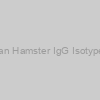 Biotin Armenian Hamster IgG Isotype Control[PIP] |
|
E-AB-F09853B-100ug |
Elabscience Biotech |
100ug |
EUR 50 |
|
|
|
Description: FCM |
 Biotin Armenian Hamster IgG Isotype Control[PIP] |
|
E-AB-F09853B-25ug |
Elabscience Biotech |
25ug |
EUR 21 |
|
|
|
Description: FCM |
 Biotin Armenian Hamster IgG Isotype Control[PIP] |
|
E-AB-F09853B-each |
Elabscience Biotech |
each |
Ask for price |
|
|
|
Description: FCM |
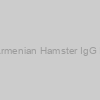 PE/Cyanine7 Armenian Hamster IgG Isotype Control |
|
DL22569F-20Tests |
DL Develop |
20Tests |
EUR 185 |
 PE/Cyanine7 Armenian Hamster IgG Isotype Control |
|
DL22569F-50Tests |
DL Develop |
50Tests |
EUR 267.5 |
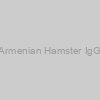 PE/Cyanine5.5 Armenian Hamster IgG Isotype Control |
|
DL22570F-20Tests |
DL Develop |
20Tests |
EUR 185 |
 PE/Cyanine5.5 Armenian Hamster IgG Isotype Control |
|
DL22570F-50Tests |
DL Develop |
50Tests |
EUR 267.5 |
 PE/Cyanine7 Armenian Hamster IgG Isotype Control |
|
DL22584F-25ug |
DL Develop |
25μg |
EUR 182 |
 PE/Cyanine7 Armenian Hamster IgG Isotype Control |
|
DL22584F-50ug |
DL Develop |
50μg |
EUR 272 |
 PE/Cyanine5.5 Armenian Hamster IgG Isotype Control |
|
DL22585F-25ug |
DL Develop |
25μg |
EUR 182 |
 PE/Cyanine5.5 Armenian Hamster IgG Isotype Control |
|
DL22585F-50ug |
DL Develop |
50μg |
EUR 272 |
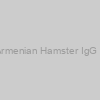 PerCP-Cy5.5 Armenian Hamster IgG Isotype Control |
|
E16FTCS006-100U |
EnoGene |
100 μg |
EUR 888.33 |
|
Description: Available in various conjugation types. |
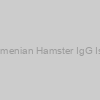 NE Purified Armenian Hamster IgG Isotype Control |
|
E16FTCY006-050U |
EnoGene |
50 μg |
EUR 260 |
|
Description: Available in various conjugation types. |
 NE Purified Armenian Hamster IgG Isotype Control |
|
E16FTCY006-1000U |
EnoGene |
1 mg |
EUR 1516.67 |
|
Description: Available in various conjugation types. |
 NE Purified Armenian Hamster IgG Isotype Control |
|
E16FTCY006-500U |
EnoGene |
500 μg |
EUR 823.33 |
|
Description: Available in various conjugation types. |
 [SHG-1]) Syrian Hamster IgG Isotype Control (PE) [SHG-1] |
|
E2781998 |
EnoGene |
100tests |
EUR 485 |
|
Description: Biotin-Conjugated, FITC-Conjugated , AF350 Conjugated , AF405M-Conjugated ,AF488-Conjugated, AF514-Conjugated ,AF532-Conjugated, AF555-Conjugated ,AF568-Conjugated , HRP-Conjugated, AF405S-Conjugated, AF405L-Conjugated , AF546-Conjugated, AF594-Conjugated , AF610-Conjugated, AF635-Conjugated , AF647-Conjugated , AF680-Conjugated , AF700-Conjugated , AF750-Conjugated , AF790-Conjugated , APC-Conjugated , PE-Conjugated , Cy3-Conjugated , Cy5-Conjugated , Cy5.5-Conjugated , Cy7-Conjugated Antibody |
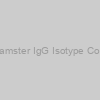 PE Syrian Hamster IgG Isotype Control[SHG-1] |
|
E-AB-F09762D-100Tests |
Elabscience Biotech |
100Tests |
EUR 82 |
|
|
|
Description: FCM |
 PE Syrian Hamster IgG Isotype Control[SHG-1] |
|
E-AB-F09762D-100Tests2 |
Elabscience Biotech |
100Tests×2 |
EUR 112 |
|
|
|
Description: FCM |
 PE Syrian Hamster IgG Isotype Control[SHG-1] |
|
E-AB-F09762D-20Tests |
Elabscience Biotech |
20Tests |
EUR 32 |
|
|
|
Description: FCM |
 PE Syrian Hamster IgG Isotype Control[SHG-1] |
|
E-AB-F09763D-100ug |
Elabscience Biotech |
100ug |
EUR 50 |
|
|
|
Description: FCM |
 PE Syrian Hamster IgG Isotype Control[SHG-1] |
|
E-AB-F09763D-25ug |
Elabscience Biotech |
25ug |
EUR 21 |
|
|
|
Description: FCM |
 PE Syrian Hamster IgG Isotype Control[SHG-1] |
|
E-AB-F09763D-each |
Elabscience Biotech |
each |
Ask for price |
|
|
|
Description: FCM |
) Syrian Hamster IgG Isotype Control(APC Conjugated) |
|
DL22377F-20Tests |
DL Develop |
20 Tests |
EUR 120 |
) Syrian Hamster IgG Isotype Control(APC Conjugated) |
|
DL22377F-50Tests |
DL Develop |
50 Tests |
EUR 210 |
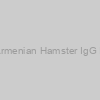 UNE Purified Armenian Hamster IgG Isotype Control |
|
E16FTCZ006-1000U |
EnoGene |
1 mg |
EUR 1581.67 |
|
Description: Available in various conjugation types. |
 UNE Purified Armenian Hamster IgG Isotype Control |
|
E16FTCZ006-100U |
EnoGene |
100 μg |
EUR 433.33 |
|
Description: Available in various conjugation types. |
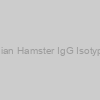 Purified Armenian Hamster IgG Isotype Control[PIP] |
|
E-AB-F09853A-100ug |
Elabscience Biotech |
100ug |
EUR 50 |
|
|
|
Description: FCM |
 Purified Armenian Hamster IgG Isotype Control[PIP] |
|
E-AB-F09853A-25ug |
Elabscience Biotech |
25ug |
EUR 21 |
|
|
|
Description: FCM |
 Purified Armenian Hamster IgG Isotype Control[PIP] |
|
E-AB-F09853A-each |
Elabscience Biotech |
each |
Ask for price |
|
|
|
Description: FCM |
) Syrian Hamster IgG Isotype Control(PerCP Conjugated) |
|
DL22378F-20Tests |
DL Develop |
20 Tests |
EUR 150 |
) Syrian Hamster IgG Isotype Control(PerCP Conjugated) |
|
DL22378F-50Tests |
DL Develop |
50 Tests |
EUR 255 |
) Syrian Hamster IgG Isotype Control(PerCP Conjugated) |
|
DL22393F-25ug |
DL Develop |
25 μg |
EUR 144 |
) Syrian Hamster IgG Isotype Control(PerCP Conjugated) |
|
DL22393F-50ug |
DL Develop |
50 μg |
EUR 264 |
 [PIP]) Armenian Hamster IgG Isotype Control (PE/Cy7) [PIP] |
|
E2781888 |
EnoGene |
100tests |
EUR 485 |
|
Description: Biotin-Conjugated, FITC-Conjugated , AF350 Conjugated , AF405M-Conjugated ,AF488-Conjugated, AF514-Conjugated ,AF532-Conjugated, AF555-Conjugated ,AF568-Conjugated , HRP-Conjugated, AF405S-Conjugated, AF405L-Conjugated , AF546-Conjugated, AF594-Conjugated , AF610-Conjugated, AF635-Conjugated , AF647-Conjugated , AF680-Conjugated , AF700-Conjugated , AF750-Conjugated , AF790-Conjugated , APC-Conjugated , PE-Conjugated , Cy3-Conjugated , Cy5-Conjugated , Cy5.5-Conjugated , Cy7-Conjugated Antibody |
 [PIP]) Armenian Hamster IgG Isotype Control (PE/Cy5.5) [PIP] |
|
E2781889 |
EnoGene |
100tests |
EUR 485 |
|
Description: Biotin-Conjugated, FITC-Conjugated , AF350 Conjugated , AF405M-Conjugated ,AF488-Conjugated, AF514-Conjugated ,AF532-Conjugated, AF555-Conjugated ,AF568-Conjugated , HRP-Conjugated, AF405S-Conjugated, AF405L-Conjugated , AF546-Conjugated, AF594-Conjugated , AF610-Conjugated, AF635-Conjugated , AF647-Conjugated , AF680-Conjugated , AF700-Conjugated , AF750-Conjugated , AF790-Conjugated , APC-Conjugated , PE-Conjugated , Cy3-Conjugated , Cy5-Conjugated , Cy5.5-Conjugated , Cy7-Conjugated Antibody |
 [SHG-1]) Syrian Hamster IgG Isotype Control (FITC) [SHG-1] |
|
E2781997 |
EnoGene |
100tests |
EUR 485 |
|
Description: Biotin-Conjugated, FITC-Conjugated , AF350 Conjugated , AF405M-Conjugated ,AF488-Conjugated, AF514-Conjugated ,AF532-Conjugated, AF555-Conjugated ,AF568-Conjugated , HRP-Conjugated, AF405S-Conjugated, AF405L-Conjugated , AF546-Conjugated, AF594-Conjugated , AF610-Conjugated, AF635-Conjugated , AF647-Conjugated , AF680-Conjugated , AF700-Conjugated , AF750-Conjugated , AF790-Conjugated , APC-Conjugated , PE-Conjugated , Cy3-Conjugated , Cy5-Conjugated , Cy5.5-Conjugated , Cy7-Conjugated Antibody |
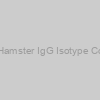 FITC Syrian Hamster IgG Isotype Control[SHG-1] |
|
E-AB-F09762C-100Tests |
Elabscience Biotech |
100Tests |
EUR 82 |
|
|
|
Description: FCM |
 FITC Syrian Hamster IgG Isotype Control[SHG-1] |
|
E-AB-F09762C-100Tests2 |
Elabscience Biotech |
100Tests×2 |
EUR 112 |
|
|
|
Description: FCM |
 FITC Syrian Hamster IgG Isotype Control[SHG-1] |
|
E-AB-F09762C-20Tests |
Elabscience Biotech |
20Tests |
EUR 32 |
|
|
|
Description: FCM |
 FITC Syrian Hamster IgG Isotype Control[SHG-1] |
|
E-AB-F09763C-100ug |
Elabscience Biotech |
100ug |
EUR 50 |
|
|
|
Description: FCM |
 FITC Syrian Hamster IgG Isotype Control[SHG-1] |
|
E-AB-F09763C-25ug |
Elabscience Biotech |
25ug |
EUR 21 |
|
|
|
Description: FCM |
 FITC Syrian Hamster IgG Isotype Control[SHG-1] |
|
E-AB-F09763C-each |
Elabscience Biotech |
each |
Ask for price |
|
|
|
Description: FCM |
 PerCP/Cyanine5.5 Armenian Hamster IgG Isotype Control |
|
DL22571F-20Tests |
DL Develop |
20Tests |
EUR 185 |
 PerCP/Cyanine5.5 Armenian Hamster IgG Isotype Control |
|
DL22571F-50Tests |
DL Develop |
50Tests |
EUR 267.5 |
 PerCP/Cyanine5.5 Armenian Hamster IgG Isotype Control |
|
DL22586F-25ug |
DL Develop |
25μg |
EUR 182 |
 PerCP/Cyanine5.5 Armenian Hamster IgG Isotype Control |
|
DL22586F-50ug |
DL Develop |
50μg |
EUR 272 |
 [SHG-1]) Syrian Hamster IgG Isotype Control (AF488) [SHG-1] |
|
E2781999 |
EnoGene |
100tests |
EUR 485 |
|
Description: Biotin-Conjugated, FITC-Conjugated , AF350 Conjugated , AF405M-Conjugated ,AF488-Conjugated, AF514-Conjugated ,AF532-Conjugated, AF555-Conjugated ,AF568-Conjugated , HRP-Conjugated, AF405S-Conjugated, AF405L-Conjugated , AF546-Conjugated, AF594-Conjugated , AF610-Conjugated, AF635-Conjugated , AF647-Conjugated , AF680-Conjugated , AF700-Conjugated , AF750-Conjugated , AF790-Conjugated , APC-Conjugated , PE-Conjugated , Cy3-Conjugated , Cy5-Conjugated , Cy5.5-Conjugated , Cy7-Conjugated Antibody |
 [SHG-1]) Syrian Hamster IgG Isotype Control (AF647) [SHG-1] |
|
E2782000 |
EnoGene |
100tests |
EUR 485 |
|
Description: Biotin-Conjugated, FITC-Conjugated , AF350 Conjugated , AF405M-Conjugated ,AF488-Conjugated, AF514-Conjugated ,AF532-Conjugated, AF555-Conjugated ,AF568-Conjugated , HRP-Conjugated, AF405S-Conjugated, AF405L-Conjugated , AF546-Conjugated, AF594-Conjugated , AF610-Conjugated, AF635-Conjugated , AF647-Conjugated , AF680-Conjugated , AF700-Conjugated , AF750-Conjugated , AF790-Conjugated , APC-Conjugated , PE-Conjugated , Cy3-Conjugated , Cy5-Conjugated , Cy5.5-Conjugated , Cy7-Conjugated Antibody |
 [SHG-1]) Syrian Hamster IgG Isotype Control (EV450) [SHG-1] |
|
E2782072 |
EnoGene |
100tests |
EUR 485 |
|
Description: Biotin-Conjugated, FITC-Conjugated , AF350 Conjugated , AF405M-Conjugated ,AF488-Conjugated, AF514-Conjugated ,AF532-Conjugated, AF555-Conjugated ,AF568-Conjugated , HRP-Conjugated, AF405S-Conjugated, AF405L-Conjugated , AF546-Conjugated, AF594-Conjugated , AF610-Conjugated, AF635-Conjugated , AF647-Conjugated , AF680-Conjugated , AF700-Conjugated , AF750-Conjugated , AF790-Conjugated , APC-Conjugated , PE-Conjugated , Cy3-Conjugated , Cy5-Conjugated , Cy5.5-Conjugated , Cy7-Conjugated Antibody |
 Normal hamster polyclonal isotype control IgG |
|
nAP-0011 |
Angio Proteomie |
1mg |
EUR 459 |
) Armenian Hamster IgG Isotype Control(PerCP Conjugated) |
|
DL22567F-20Tests |
DL Develop |
20 Tests |
EUR 150 |
Spinal wire damage (SCI) usually ends in long-lasting useful deficits, largely as a consequence of major and secondary white matter injury on the website of damage. The transplantation of neural stem cells (NSCs) has proven promise for re-establishing communications between separated areas of the spinal wire by way of the insertion of latest neurons between the injured axons and goal neurons. However, the inhibitory microenvironment that develops after SCI usually causes endogenous and transplanted NSCs to distinguish into glial cells moderately than neurons. Functional biomaterials have been proven to mitigate the results of the antagonistic SCI microenvironment and promote the neuronal differentiation of NSCs.
A transparent understanding of the mechanisms of neuronal differentiation inside the injury-induced microenvironment would possible permit for the event of remedy methods designed to advertise the innate potential of NSCs to distinguish into neurons. The elevated differentiation of neurons might contribute to relay formation, facilitating useful restoration after SCI. In this assessment, we summarize present methods used to reinforce the neuronal differentiation of NSCs by way of the reconstruction of the SCI microenvironment and to enhance the intrinsic neuronal differentiation skills of NSCs, which is important for SCI restore.


